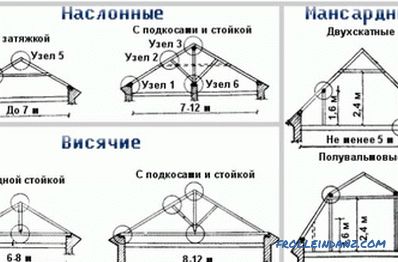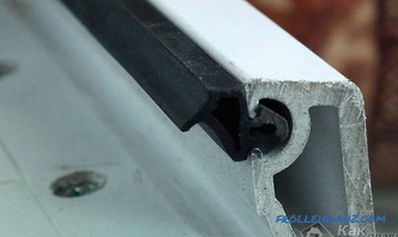Today, much attention is paid to environmental problems, and people are increasingly moving from concrete houses to wooden buildings, made mostly of timber. But with all the attractiveness of these buildings have a big drawback - the tree suffers from insects, atmospheric factors and bacteria, and this causes the material to rot. Therefore, the treatment of the timber antiseptic. How is this done and what means can be accomplished? Consider the different methods for creating such protection for wooden structures.
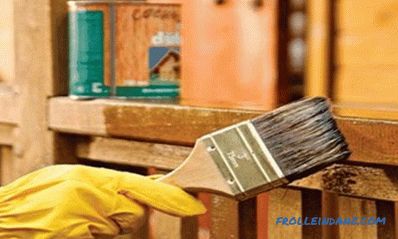
The work on the processing of timber is recommended in the summer.
How to work with an antiseptic
The greatest problems arise on those elements of the house that are exposed to the environment or the soil. This is especially manifested in high humidity, poor ventilation and temperature jumps. Here is a list of such elements:
- lags and draft floor;
- basement and cellar;
- lower edging of the building.

Comparative characteristics of a regular and maple bar.
They need to be protected from adverse impacts, since these parts are basic for the entire building. The main task in the treatment of a timber with an antiseptic consists of the following:
- preservation of the inner part of the tree;
- formation of chemical compounds inside the bar that protect it from rotting and resistant to leaching;
- obstruction of moisture getting inside the structure;
- raising the ignition threshold.
For these works, such impregnations and coatings as "Lovin", "Neomid", "Senezh", KSL are used. They provide a long term protection of the tree - 15-20 years, retain its structure and prevent the processes of decay.
Their important property is compatibility with lacquers, coatings and adhesives used in the construction of a building made of timber. How to use them to stop wood decay?
First, you need to clean the area to be treated with an ax or chisel, while removing a part of a healthy tree. Then in this place it is necessary to drive in the reinforcement, soak the timber with an antiseptic and cover it with acrylic or epoxy putty.
Protection of the tree by painting
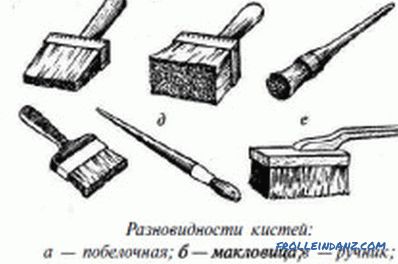
Varieties of brushes for painting a bar.
If the paint prevents the treatment of the timber, it can be removed (if it is oil-based) with a 2% sodium hydroxide solution or with a special compound for such works, which is sold in the construction market (SP-7 or AGF- one).
After applying the mixture, wait a few hours until the paint swells. Then it is easily removed with a sharpened trowel or scraper. Sometimes a construction dryer is used for this purpose - the painted part of the paint is exfoliated under the heat of hot air. Before work, you need to moisten the tree - then the water, evaporating, will swell up the paint.
After completing this work, an antiseptic is applied to the wooden surface, and after it penetrates the inside of the bar (this takes 2-3 hours), you can re-paint it with oil paint - this will give additional protection against rotting.
To do this, first apply a primer (roller or brush), which closes all remaining pores in the material and prevents moisture from getting inside the bar. After drying of the primer (usually drying oil is used), oil paint or lead red lead is applied on the surface of the tree in two layers.
In order to form a waterproof shield on the beam surface, it must additionally be treated with pentaphthalic (glyphthalic) enamels. This method of protecting the tree from rotting will allow the wooden parts to serve for a long time.
But the described method has a disadvantage - it can be used only if there is a vapor barrier in the house. If not, then it is recommended to use the so-called breathable formulations. They do not close the pores in the tree and are more durable, but their price is higher. They are not recommended to be applied on oil paint. They need to paint a fresh timber, removing resin from it with acetone. You can apply a 10% solution of soda (soda ash), heating it to 50 °.
All work must be done in the summer, after 2-3 weeks of hot weather, only then high quality will be guaranteed.
Materials and tools used
- Antiseptic coatings.
- Primer (linseed oil).
- Oil paint (red lead).
- Enamel.
- Putty.
- Solutions for removing paint from wood.
- Armature.
- Building hairdryer.
- The hammer.
- Ax or chisel.
- Spatula (scraper).
- Paint brush or roller.
The quality of processing of the main parts of a wooden house determines its service life and the comfort of the people living in it. Therefore, it is not necessary to spare funds for wood processing with antiseptics and paint, since the lack of proper protection will lead to the development of the process of decay in the tree, which can badly affect the building and lead to undesirable consequences.
Didn't find the answer in the article? More information on the topic:
-
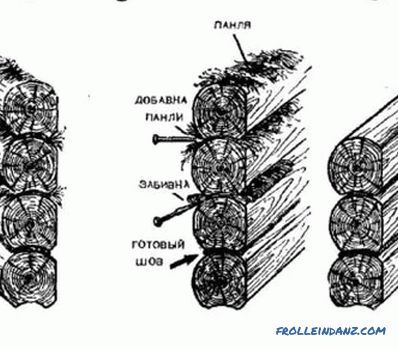
Tool for caulking a house from a bar
A caulking iron from a timber house protects it from external influences. For caulking iron, felt, moss, jute, hemp and tow are used. Plugging the gaps between the logs can be 2 ways: stretching or in the set.
-
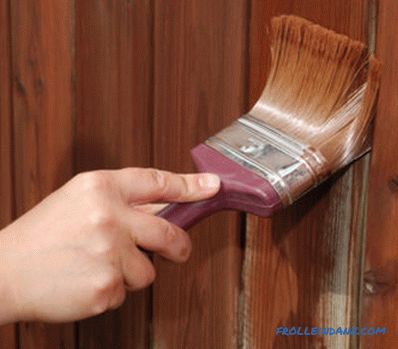
Why do we need wood treatment with wood stain and varnish?
The rules for processing wood stain and varnish. Preparation of wooden surfaces for processing. Brief description of the main types of stains and varnishes for wood. Processing technology and the right tool.

